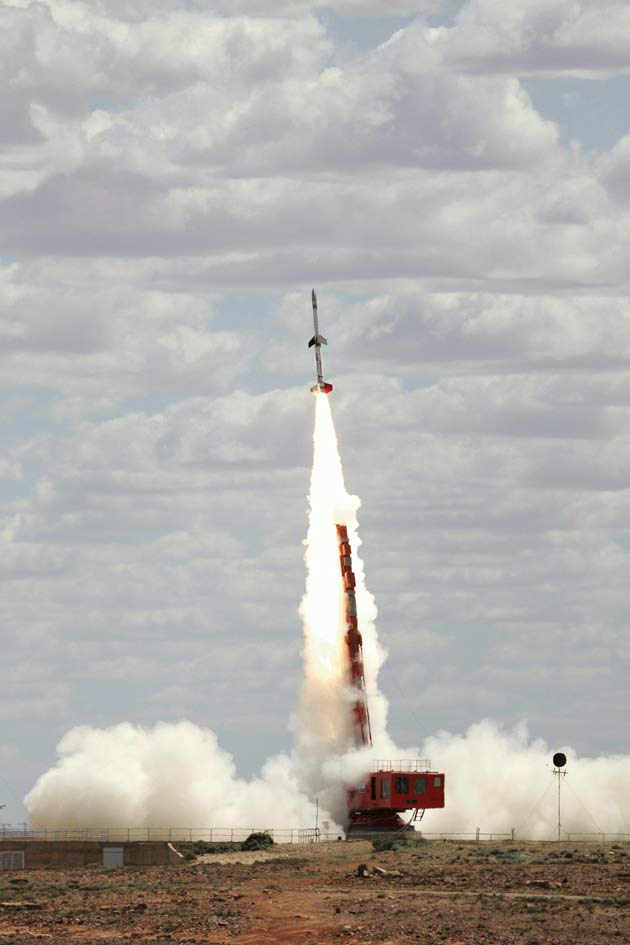Australian Scramjet Screams Skyward

Things are going up down in Australia, and reaching hypersonic speed.
An experiment in harnessing scramjet technology for future space transportation systems was flown last weekend by the University of Queensland in Brisbane.
The March 25 test shot was part of a HyShot program geared to gather extensive scramjet pressure and temperature measurements.
Supersonic combustion ramjets-called scramjets-are being touted as the next generation of rocket travel, a technology that could lower the cost of hurling satellites into orbit or to permit point-to-point passenger travel around the planet.
Scramjets inhale oxygen from the atmosphere to burn their fuel, rather than carrying oxidizers in their tanks.
The HyShot flight departed a launch site in Woomera, some 310 miles (500 kilometers) north of Adelaide, and flew a 10-minute trajectory. The scramjet was attached to a Terrier-Orion rocket combination with the scramjet payload mounted atop the second stage of the rocket configuration.
The University of Queensland's Center for Hypersonics is studying the speed regime of Mach 5 and above, developing scramjets for the past 25 years with funding from Australian, United States, Japanese and German sources.
Get the Space.com Newsletter
Breaking space news, the latest updates on rocket launches, skywatching events and more!
Researchers are now analyzing data from the test, focused on the last six seconds of flight prior to impact when the scramjet may have reached Mach 8-eight times the speed of sound, or nearly 8,000 kilometers per hour. That's about 10 times faster than a conventional jet.
The flight experiment is a commission from the Japan Aerospace Exploration Agency (JAXA) to the University of Queensland. Last week it was announced JAXA has gifted its $2 million advanced launcher to the university to help further the peaceful applications of scramjet technology.
HyShot program leader, Allan Paull, said in a statement that another scramjet experiment is slated for a March 29 liftoff.
"We have one launch down and one to go," Paull said. "We have a job to finish."
Movies of the test are available here and here.
- Earlier HyShot Scramjet Test a Success
- X-43A Scramjet: Full Speed Ahead to Mach 10
Join our Space Forums to keep talking space on the latest missions, night sky and more! And if you have a news tip, correction or comment, let us know at: community@space.com.

Leonard David is an award-winning space journalist who has been reporting on space activities for more than 50 years. Currently writing as Space.com's Space Insider Columnist among his other projects, Leonard has authored numerous books on space exploration, Mars missions and more, with his latest being "Moon Rush: The New Space Race" published in 2019 by National Geographic. He also wrote "Mars: Our Future on the Red Planet" released in 2016 by National Geographic. Leonard has served as a correspondent for SpaceNews, Scientific American and Aerospace America for the AIAA. He has received many awards, including the first Ordway Award for Sustained Excellence in Spaceflight History in 2015 at the AAS Wernher von Braun Memorial Symposium. You can find out Leonard's latest project at his website and on Twitter.









